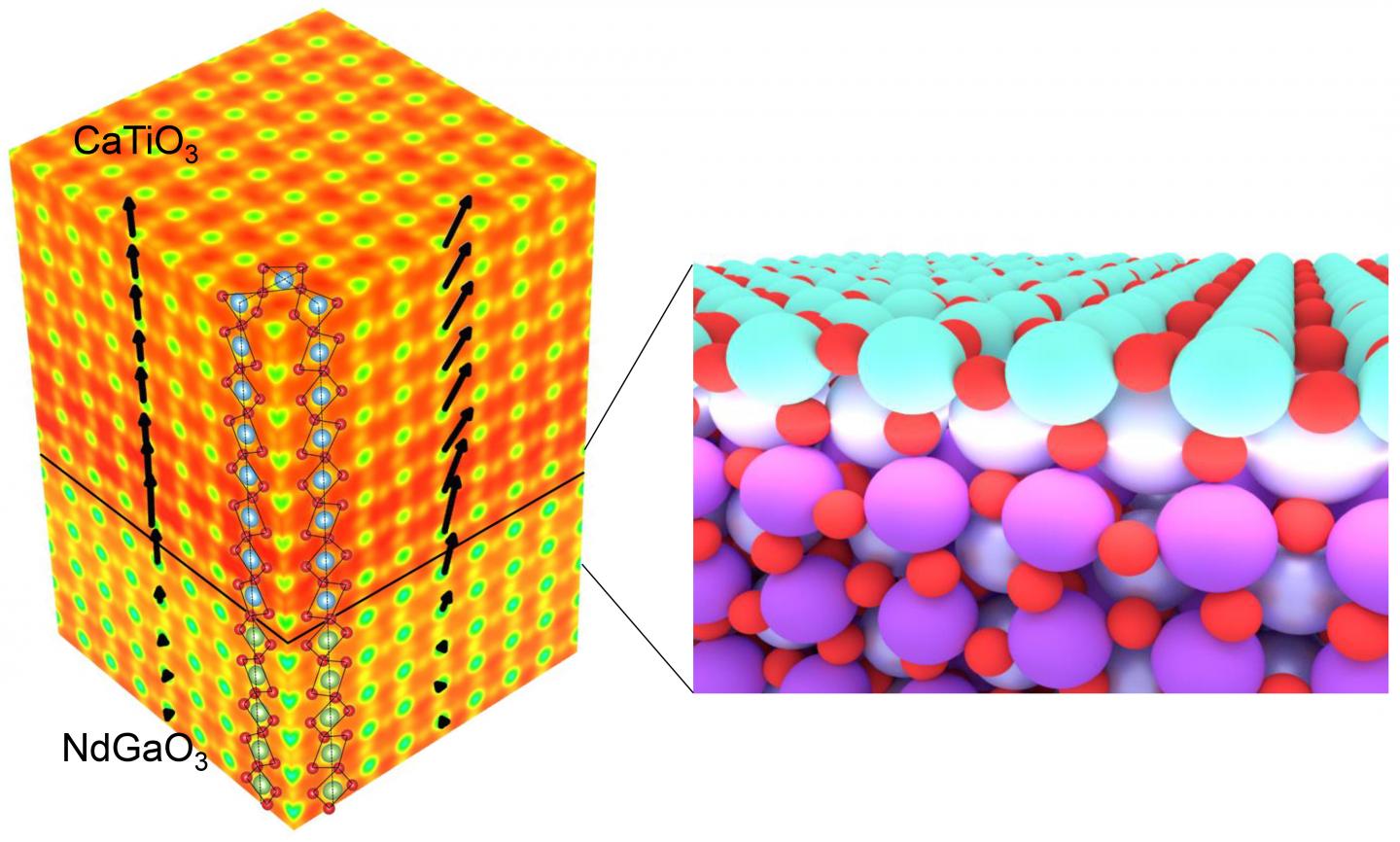3D imaging technique unlocks perovskite properties

American team image 3D atomic and electron density structure of complex crystal
A team of materials scientists from Penn State, Cornell and Argonne National Laboratory in the USA have, for the first time, visualised the 3D atomic and electron density structure of the most complex perovskite crystal structure system decoded to date.
Perovskite crystals have an unusual grouping of oxygen atoms that form an octahedron. This arrangement of oxygen atoms acts like a cage that can hold a large number of the elemental atoms in the periodic table. Additionally, other atoms can be fixed to the corners of a cube outside of the cage at precise locations to alter the material's properties, for instance in changing a metal into an insulator, or a non-magnet into a ferromagnet.
In their current work, the team grew the very first discovered perovskite crystal, called calcium titanate, on top of a series of other perovskite crystal substrates with similar but slightly different oxygen cages at their surfaces. Because the thin film perovskite on top wants to conform to the structure of the thicker substrate, it contorts its cages in a process known as tilt epitaxy.
The researchers found this tilt epitaxy of calcium titanate caused a very ordinary material to become ferroelectric- a spontaneous polarisation - and to remain ferroelectric up to 900 Kelvin, around three times hotter than room temperature. They were also able to visualise the three-dimensional electron density distribution in calcium titanate thin film for the first time.
"We have been able to see atoms for quite some time, but not map them and their electron distribution in space in a crystal in three dimensions," said Venkat Gopalan, professor of materials science and physics, Penn State. "If we can see not just where atomic nuclei are located in space, but also how their electron clouds are shared, that will tell us basically everything we need to know about the material in order to infer its properties."
That was the challenge the team set for itself over five years ago when Gopalan gave the project to his student and lead author of a new report in Nature Communications, Yakun Yuan,. Based on a rarely used x-ray visualization technique called COBRA, (coherent Bragg rod analysis) originally developed by a group in Israel, Yuan figured out how to expand and modify the technique to analyze one of the most complicated, least symmetrical material systems studied to date. This system is a strained three-dimensional perovskite crystal with octahedral tilts in all directions, grown on another equally complex crystal structure.
"To reveal 3D structural details at the atomic level, we had to collect extensive datasets using the most brilliant synchrotron X-ray source available at Argonne National Labs and carefully analyse them with the COBRA analysis code modified for accommodating the complexity of such low symmetry," said Yuan.
Gopalan went on to explain that very few perovskite oxygen cages are perfectly aligned throughout the material. Some rotate counterclockwise in one layer of atoms and clockwise in the next. Some cages are squeezed out of shape or tilt in directions that are in or out of plane to the substrate surface. From the interface of a film with the substrate it is grown on, all the way to its surface, each atomic layer may have unique changes in their structure and pattern. All of these distortions make a difference in the material properties, which they can predict using a computational technique called density functional theory (DFT).
"The predictions from the DFT calculations provide insights that complement the experimental data and help explain the way that material properties change with the alignment or tilting of the perovskite oxygen cages," said Susan Sinnott, head and professor of Materials Science and Engineering, whose group performed the theoretical calculations.
The team also validated their advanced COBRA technique against multiple images of their material using the powerful Titan transmission electron microscope in the Materials Research Institute at Penn State. Since the electron microscopes image extremely thin electron transparent samples in a 2D projection, not all of the 3D image could be captured even with the best microscope available today and with multiple sample orientations. This is an area where 3D dimensional imaging by the COBRA technique outperformed the electron microscopy in such complex structures.
The researchers believe their COBRA technique is applicable to the study of many other 3D, low-symmetry atomic crystals.
"Three-dimensional atomic scale electron density reconstruction of octahedral tilt epitaxy in functional perovskites' by Yanfu Lu et al; Nature Communicationsvolume 9, Article number: 5220 (2018)
The National Science Foundation funded this project with additional support provided through the Department of Energy and the Penn State 2D Crystal Consortium, a NSF Materials Innovation Platform, and the Penn State institute for CyberScience.


































